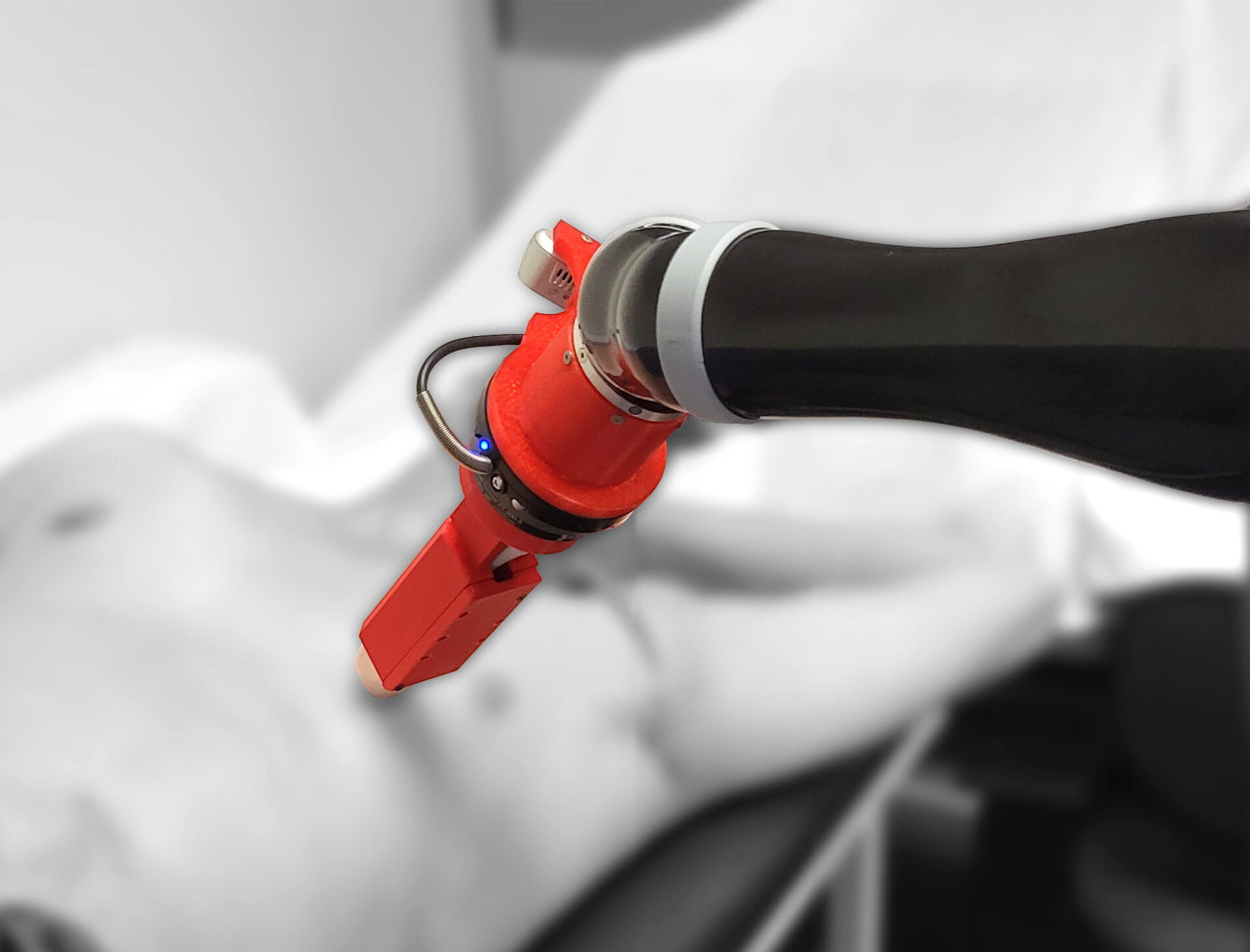Our remote robot-controlled
ultrasound diagnostic technology
addresses two core problems
Problem 1:
Access to Ultrasound
Every year in rural Australia, more than 1 million ultrasounds are delayed or not performed at all due to limited access.
Rural communities suffer a shortage of sonographers which significantly restricts access to key modalities of ultrasound.
The expertise and knowledge of a trained sonographer is essential for an accurate diagnosis, so rural patients must either travel to a metropolitan location or wait long periods for an outreach team to visit.
This delay of diagnosis creates stress for patients, raises healthcare costs, and leads to adverse health outcomes. These issues are particularly acute in the Aboriginal and Torres Strait Islander communities.
Rural areas have a 25% higher morbidity and mortality due to reduced access to primary healthcare compared to metropolitan locations. In addition, Aboriginal and Torres Strait Islander adults in indigenous communities, are 70% more likely to die from circulatory diseases than non-indigenous Australians.
Problem 2:
Sonographer Injury
Of the 5,000 sonographers in Australia, 90% experience pain for more than half of their career and 20% suffer career ending injuries.
Due to the complex physical nature of performing both echocardiograms and general sonography, there is a high incidence of injury for sonographers.
Even with good patient and machine position, scanning a patient involves strenuous sustained physical activity, pushing a heavy transducer while simultaneously leaning over a patient, using the keyboard and viewing the image monitor.
Advanced sonographers are also in short supply, due to their highly specialised skillset, which means only certain individuals can perform complex ultrasound diagnostic scans (like echocardiograms). This further limits access to ultrasounds in rural and remote settings.
Our hardware set-up, proprietary software and user interface can help eliminate sonographer injury and provide both increased training accessibility and work flexibility.
Our Robotic Ultrasound Assistance System
Our system principally consists of a robotic arm (mounted on a trolley) and a remote user console with telecommunication interface.
The system can be operated from a central location and to our knowledge is the only system globally that can remotely perform a comprehensive echocardiogram (ultrasound of the heart).
This allows a remote sonographer to guide an ultrasound transducer (probe) to conduct an ultrasound on a patient, with minimal involvement of any bed-side health professional.

Robotic Teleheath Ultrasound in Practice
Currently, patients in rural locations can wait more than 100 days for an ultrasound provided by via infrequent outreach programs.
Our system enables an ultrasound scan and report sent to the patient’s GP within 48 hours of booking the scan.
Key Features
robotics
Proprietary
software
Lightweight
& portable
Patented
internationally
Timeline
Clinical trials have been underway at a Queensland Tertiary Public Hospital since February 2022, and remote trials are currently commencing at Queensland’s Longreach and Cloncurry Hospitals.
RMI expects to commence commercial operations in 2026.
- RMI established
- Work commences with Queensland University of Technology (School of Electrical Engineering & Robotics)
- Development of proof-of-concept device
- Proof-of-concept complete
- Continued development of system
- System installed at Queensland Tertiary Public Hospital
- Initial pilot research trials
- PCT patent filed
- Ongoing pilot research trials
- Pre-commercial system developed
- Ongoing clinical trials with Queensland Health
- Completion of product design, testing and verification
- Filing of country-specific patents
- Completion of pivotal clinical trial
- Preparation for regulatory filing (CE and TGA)
- Remote echocardiogram clinical service commences from Brisbane to Longreach and Cloncurry (via TGA Authorised Prescriber pathway)